Dear Dr. Mathew, let us first thank you for your collaboration with our electronic journal e-medida. Our journal is focused on the dissemination of metrology to a wider audience and in this sense legal metrology is maybe one of the topics which generates more interest among our readers. So as Vice-President and President elect of the International Organisation of Legal Metrology (OIML) your ideas and thoughts are very interesting to all of us.
Before joining METAS (the National Metrology Institute of Switzerland) in 2017 as Head of Legal Metrology and to be appointed later on as Deputy Director, you have had a wide experience in consulting and telecommunications companies, how do you think your background has contributed to your vision of legal metrology?
By having worked in different industries, I have gained exposure to various regulatory frameworks. In the telecommunications sector, in particular, the regulatory challenge was to stay updated with technological advancements. Nowadays, a similar scenario applies to legal metrology as well. The evolving technology of measuring instruments and the methods of conducting measurements will inevitably impact the regulatory framework. It becomes imperative for the framework to ensure a fair competition, facilitate trade and commerce, and safeguard consumer interests.
Metrology is evolving nowadays faster than in the past decades: quantum metrology, self-calibrating instruments, the internet of things, artificial intelligence… these new developments have the potential to change legal metrology as it is now, is there a danger for the governments to lose the legal metrological control of some measuring instruments? ¿Do you think that the current conformity procedures (type approval, initial verification, periodic verification) are applicable to new smart instruments?
I believe that the existing legal metrology system faces several challenges and opportunities. As you rightly mentioned, technology is rapidly evolving, and this has a direct impact on metrology. Measuring instruments and their monitoring are becoming increasingly digital. The potential risk of falsified or biased measurement results is a definite concern. To address these issues, metrological control needs to establish specific requirements for data security and implement procedures for software evaluation, especially for a growing number of digital measuring instruments.
…technology is rapidly evolving, and this has a direct impact on metrology.
Furthermore, we may encounter new types of measuring instruments that utilize different technologies, requiring appropriate regulations. In certain cases, the current conformity procedures can be applied to these new smart measuring instruments. For example, the AI regulation proposed by the EU mandates a conformity assessment. Additionally, the technological advancements will necessitate novel approaches for introducing measuring instruments to the market, while also enabling the possibility of remote controls or surveillance.
In summary, the evolving technology in metrology presents both challenges and opportunities. It demands robust security measures, updated regulations, and innovative approaches to ensure accurate and trustworthy measurements while embracing the benefits of technological advancements.
In relation with Digitization of Economy and Society in a globalized world, how is OIML facing this challenge?
At its 56th meeting, the CIML made a significant decision to enhance the role of international legal metrology in society and the economy through the establishment of the OIML Digitalisation Task Group (DTG). The primary objective of the DTG is to define and achieve the OIML’s role within an international digital metrology system. One specific area of focus for the DTG is to provide support to OIML groups regarding machine readability of OIML documents.
The OIML recognizes the importance of collaboration for an effective and sustainable digital transformation of the international quality infrastructure. To this end, in 2022, the OIML, along with other major international organizations in the scientific and quality infrastructure sector, signed a Joint Statement of Intent (JSI). The purpose of the JSI is to foster cooperation and support the development, implementation, and promotion of the SI Digital Framework as part of a broader digital transformation of the international scientific and quality infrastructure.
By embracing digitalization and working collaboratively with other organizations, the OIML aims to contribute to the advancement of the international quality infrastructure and ensure its compatibility with the digital era.
One of the main purposes of the OIML is to develop model regulations, standards and related documents for use by legal metrology authorities and industry. Is the current OIML structure able to keep current in these new technological advances? Are the rules, procedures, etc adequate to have in time urgent recommendations such as the one for electrical commercial vehicles?
I believe that the existing structures and procedures are future-proof and well-suited to engage OIML’s global community in a timely manner. The consultation process holds significant importance. However, the current challenge lies in finding enough volunteers who can allocate their working time to develop recommendations. OIML, like many other organizations, relies heavily on the support of its Members.
For example, the development of Guide 22 on Electric Vehicle Supply Equipment (EVSE) was successfully completed within a year. This remarkable achievement was made possible thanks to the active involvement and dedication of the experts in OIML TC 12/p 3, who were supported by their respective National Metrology Institutes (NMIs).
…the existing structures and procedures are future-proof and well-suited to engage OIML’s global community in a timely manner.
Is the OIML setting up special procedures or programmes to help the emerging economies to get the international recognition of their legal metrology systems?
Since 2013, the Advisory Group on Countries and Economies with Emerging Metrology Systems (CEEMS AG) has been established. The primary goal of this Advisory Group is to facilitate active participation of the CEEMS community in OIML activities, develop support policies and plans for CEEMS, and provide guidance for OIML’s initiatives in relation to CEEMS. Numerous training courses and seminars have been conducted to enhance capacity building within the CEEMS framework. The work carried out by the CEEMS AG has now become one of the integral pillars of the OIML strategy.
Could you tell us something about Global Quality Infrastructure (QI) and the role of OIML?
Metrology, including scientific, industrial, and legal aspects, along with accreditation, standardization, and various services like conformity assessment (certification, testing, verification, and inspection), calibration, and market surveillance, are all crucial components of the Global Quality Infrastructure. It is advisable to adopt a coordinated approach that encompasses these elements. Enhancing legal metrology within an economy contributes to the advancement of the entire quality infrastructure of that economy. In this regard, the CEEMS AG can assume a significant role.
How the OIML can help their members to adapt their infrastructures and capabilities to maintain the mutual confidence and harmonize the consumer’s protection worldwide?
The mission of OIML is to facilitate the establishment of effective legal metrology infrastructure in economies that is mutually compatible and globally acknowledged. OIML Recommendations play a pivotal role in realizing this objective. These model regulations provide internationally standardized requirements, instilling confidence in the legal metrology infrastructure among all stakeholders, from manufacturers to consumers. Additionally, OIML, through the CEEMS AG, can raise awareness among governments about the significance of legal metrology for the social and economic development of a country.
The OIML-Certification System is another instrument to promote mutual recognition. Its aim is to facilitate, accelerate and harmonize the work of national legal metrology bodies that are responsible for type evaluation and approval of measuring instruments subject to legal metrological control.
The mission of OIML is to facilitate the establishment of effective legal metrology infrastructure in economies that is mutually compatible and globally acknowledged.
The OIML has several standardisation organisations in liaison, considering that the OIML publishes Recommendations, which are model regulations that establish the metrological characteristics required of certain measuring instruments and which specify methods and equipment for checking their conformity, is there any coordination activities in place at this respect with them?
OIML collaborates closely with various International Organizations, Regional Legal Metrology Organizations, and other regional bodies to promote legal metrology globally. OIML maintains a close partnership with BIPM, and through this collaboration, both organizations strive to present and represent the important agenda of international metrology with a unified voice and a consistent approach.
Furthermore, OIML maintains strong links with other standardization bodies, particularly ISO and IEC, as well as with the international accreditation community, namely ILAC and IAF.
Additionally, OIML can provide technical support to international organizations such as the World Health Organization (WHO) and manufacturers’ organizations. These collaborations are vital to the work of OIML and contribute to fostering confidence in testing and certification.
We suppose that are the members who decide the lines of action of OIML, what are currently the topics of main concern for the members?
Members are greatly interested in quantum metrology and digitalization, especially AI, and are eager to understand how these advancements will influence or reshape the world of legal metrology. Other challenges that are emerging on the horizon pertain to health, climate, and food safety.
The report on the OECD case study in 2016 indicated, in its final conclusion, that activities in areas like safety, health and environment, would increase and that there will be a need to develop recommendations in these fields. Are there any news and advances in this matter?
Indeed, these areas hold great importance for the work of OIML. The revision of R 91 on radar equipment for speed measurements should contribute to enhancing road safety. Additionally, the ongoing revision of recommendations R 148 and R 149, which pertain to sphygmomanometers, a crucial instrument in healthcare, is underway. Topics associated with environmental issues are also being addressed. For instance, there is a project group dedicated to developing a new recommendation for instruments used in measuring vehicle exhaust soot particle number.
Returning to the question of the new advances in metrology, do you think that it is necessary to carry out R&D projects specifically addressed to legal metrology challenges?
I believe that in practice, scientific and industrial metrology provide significant support to many legal metrology activities. The role of legal metrology extends to establishing confidence in measurement results and ensuring traceability. Therefore, it is advisable to foster synergies between scientific and legal metrology activities, including in the context of research and development (R&D) projects.
How the OIML could help the R&D community to target their efforts to the research topics that need urgent action?
The OIML’s Technical Committees provide a valuable platform for technical experts to exchange knowledge and gain insights into emerging research topics that are of increasing importance.
What do you think are the topics that require urgently research activities to support regulation?
Every country should assess its priorities based on its economic sectors, technological infrastructure, and geographical considerations. However, I believe there are several areas that will require increased research activities, such as health, food safety, and the circular economy. Additionally, the impact of digitalization and the use of AI will be significant in various research programs. Energy efficiency and mobility are also areas of keen research interest.
…there are several areas that will require increased research activities, such as health, food safety, and the circular economy.
You are also the METAS delegate in WELMEC, the European Cooperation in legal metrology. What are the main similarities and differences between both organisations? Are both complementary?
Both OIML and WELMEC play similar roles, providing important forums and valuable platforms for their members to address and discuss relevant legal metrology topics. While OIML acts as an international standard-setting body through its recommendations at an international level, WELMEC establishes a common understanding for the implementation of the European regulatory framework on metrology. Many urgent topics related to the environment, mobility, and energy are discussed and addressed in both organizations. Regular exchanges between the two organizations are facilitated through the RLMO roundtable, fostering fruitful collaboration.
To finish our interview we would like to ask you as METAS Deputy Director, what do you think should be the role of the national metrology institutes in the future to support the needs and challenges in the field of legal metrology?
I believe that NMIs should establish strong cooperation between scientific and legal metrology. Today’s challenges are complex and can only be overcome through innovative thinking and an interdisciplinary approach. NMIs should actively seek and promote international collaboration. These issues need to be addressed through a global perspective. That’s why organizations such as the BIPM or the OIML will play an important role. They can facilitate cooperation, ensure trust, and promote confidence in the global quality infrastructure.
User Review
( votes)Summary
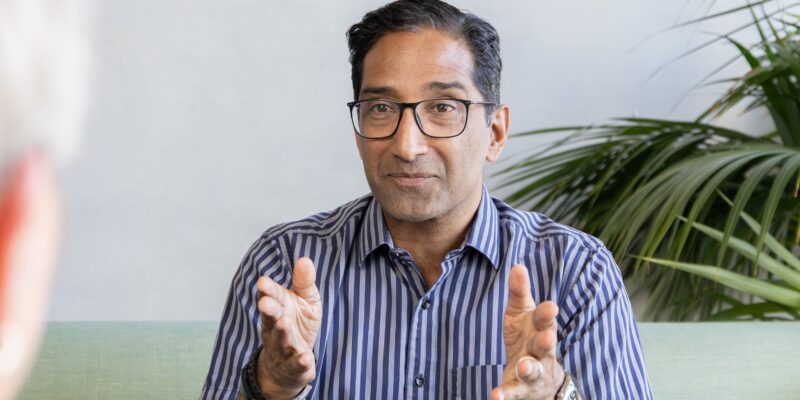

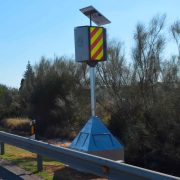
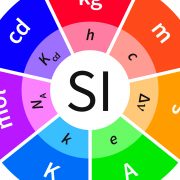


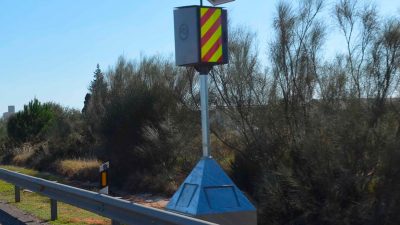
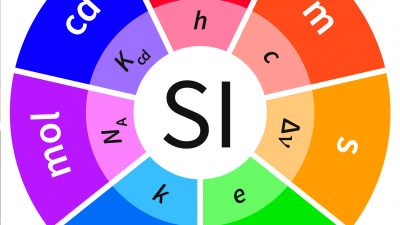
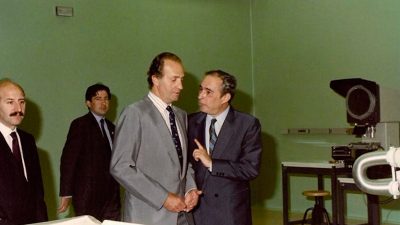
Comentarios